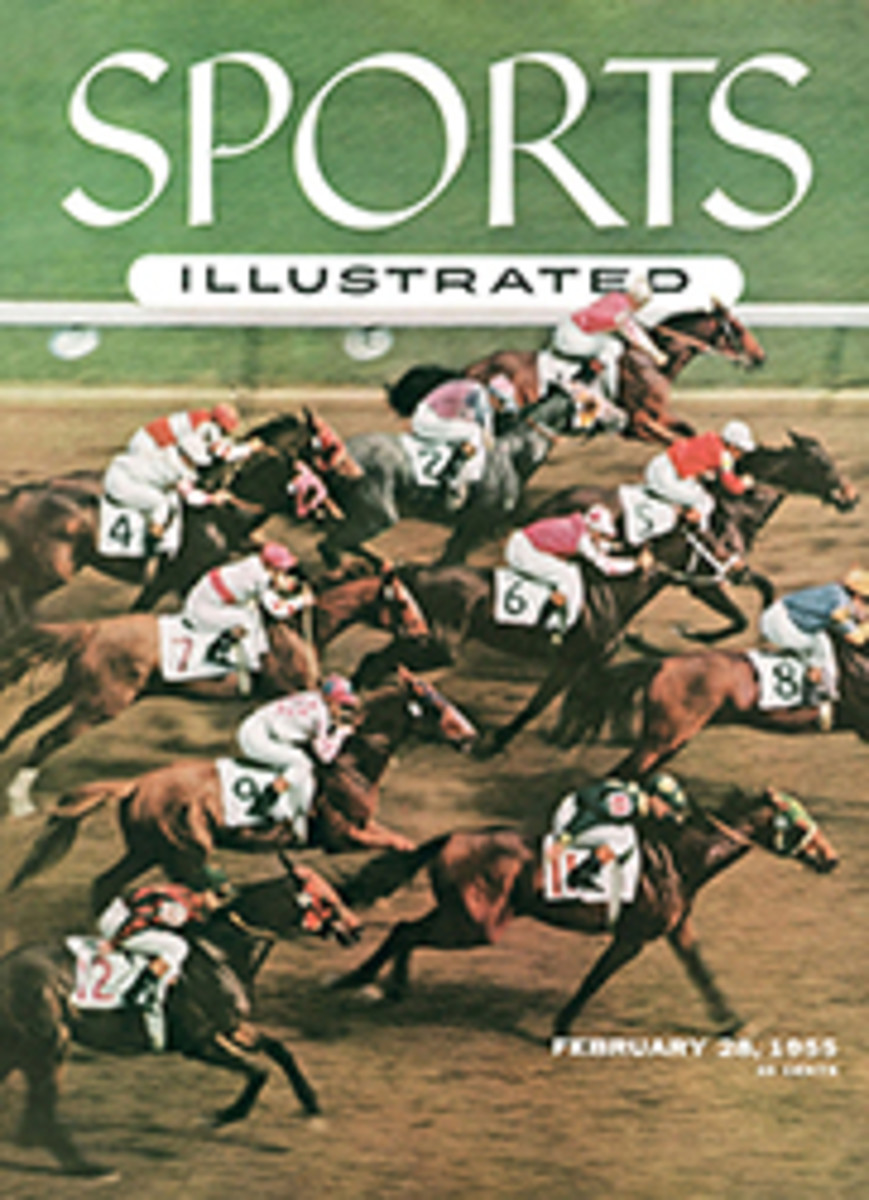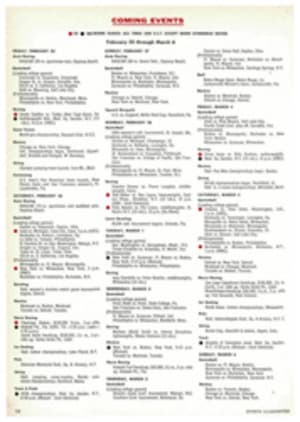
DESIGN FOR ANARCHY
The last time somebody stopped to take count there were 20 million people playing basketball around the world and 90 million others watching games. Despite these huge numbers of interested parties basketball's fascination remains a mystery to millions of other normally sports-minded individuals. Sports Columnist John Lardner, speaking for many of them, recently classified basketball as a "back-and-forth goal game with a built-in stall or sputter" and having as much fascination as a "leaky faucet."
To the uninitiated the above critique seems justified. The game does appear to be a confused script for 10 performers, punctuated by a bouncing, rolling, flying ball which sometimes goes through the basket and sometimes does not. When the game is over there is no smashing finale of a home run with the bases loaded to remember; there is no hair-raising 85-yard run to be rerun for years; there is no single sock in the jaw to reflect upon; there is no readily apparent "moment of truth" to cherish.
Basketball lovers are apt to choke up when called on for defense testimony—or drift into metaphor. They have been known to argue that their game differs from other games as much as music differs from painting—and they have a point.
For the essence of good basketball is a fluid rhythm with the underlying mathematical symmetry of a fugue by Johann Sebastian Bach. What to the spectator may seem merely hectic anarchy is designed to be a smoothly integrated pattern demanding dexterity, endurance, fine timing and continuous, split-second appraisal of percentages and alternatives.
In its most primitive state basketball is practiced by youngsters using a city street for a court and a peach basket hanging from a telephone-pole spike. At the other end of the scale are the 90 men in the professional National Basketball Association, the best of the 20 million players. A color camera catching them in a glittering arena like Madison Square Garden (see following pages) transfixes a few of the many peak points in the complex geometric patterns of the game.
Best of the professionals is Bob Cousy, 27, a onetime star at Holy Cross who is now in his fifth year with the Boston Celtics. The NBA schedule is a rugged one and the new rule which requires a team to shoot within 24 seconds of getting possession allows no rest for the weary during a game. Cousy, as a consequence, is a tired young man today but, tired from basketball as he is, Cousy is still able to expound on the special pull of the game.
"Basketball features planning to the nth degree; everything is calibrated in percentages." As he talks he becomes more intense. "Take a simple play. Our two guards crisscross behind our pivot man, who has taken the ball up high near the top of the foul circle. The guy defending against our pivot man has dropped back to permit his teammates to follow the guards. If he continues to hang back, the pivot can take a hook shot with no opposition. If he comes close to the pivot he risks having the pivot drive around him. It becomes a question of percentages—the relative costs of either alternative—and the game is full of such moments."
Another dedicated pro, Harry Gallatin of the New York Knickerbockers, is proud of the "continuity" of the game. "Baseball is an interrupted action. Between the high points are long dull stretches. In basketball the potential thrill is there every minute you're on the floor."
Some critics call basketball too sedate because it seems to lack the awesome feature of bodily contact as known in, say, football. Such thinkers should sit directly behind the basket at an NBA game. Beneath the backboard the law of the survival of the fittest prevails, with femurs, elbows and hips smacking against rib cages as players struggle for rebounds. The scrabble for the ball calls for so much strength that one acute student of the game remarked, "I'll trade 20 pounds for two inches of height anytime."
Thus the protagonists on the subject of basketball. The most arresting argument for the game is still a quantitative one: 20 millions play it around the world without particularly needing an argument for it.
PHOTO
HY PESKIN
BOB COUSY of Celtics chats with coach, Arnold (Red) Auerbach, in dressing room.
PHOTO
HY PESKIN
FIGHT FOR REBOUND
Harry Gallatin (11) of the New York Knickerbockers is flanked by Clyde Lovelette (right) and Ed Kalafat of the Minneapolis Lakers
PHOTO
HY PESKIN
Soaring in for a successful lay-up shot is Whitey Skoog of Lakers as Clifton of New York frantically holds up his arm in a vain effort to deflect the ball
PHOTO
HY PESKIN
Laker Dick Schnittker attempts a shot while Carl Braun (left) and Nat Clifton of the Knickerbockers move in to block the ball
PHOTO
HY PESKIN
Knickerbocker Guard Jim Baechtold drives past Jim Holstein of Minneapolis and goes in behind screen made by Clifton (8)
PHOTO
HY PESKIN
Dick McGuire of Knickerbockers is surrounded by Minneapolis players and referee after grabbing tap from teammate Ray Felix (second from right) under the Laker basket

